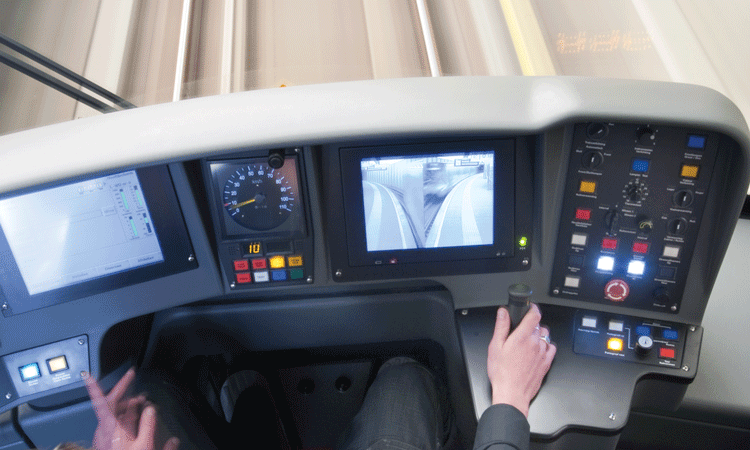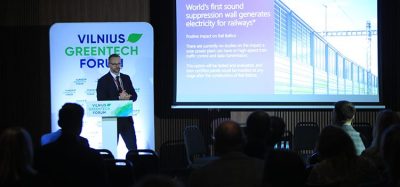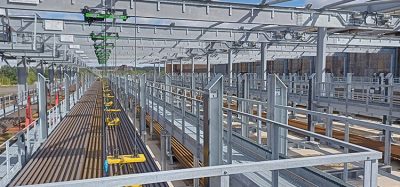ERTMS: Continuing to shape compatibility and harmonisation in Europe
Posted: 21 May 2014 | Jean-Baptiste Simonnet, Libor Lochman | No comments yet
ERTMS development was launched in 1989. The objective was to shape a harmonised and unified system for signalling, train control and train communication. The main drivers of this decision were not only to facilitate interoperability across the European railway and to improve technical compatibility (e.g. compatibility between vendor solutions) but also to harmonise and facilitate operations (e.g. harmonised human-machine interfaces), explains Libor Lochman and Jean-Baptiste Simonnet from the Community of European Railway and Infrastructure Companies (CER).


One of the challenges faced while developing the new system was to ensure that safety, reliability and quality of service for train operations would be improved or at least maintained.
The criteria for success would be to reduce the life-cycle costs of the control-command and signalling systems and, in particular, enable railway actors to buy systems and parts from different suppliers.
25 years on and the principle target, interoperability, is not yet achieved
In 1993 the first elements of an ERTMS mock-up were made available, with the first demonstrators available from 1999 onwards. However, the first complete system specification could only be achieved in 2008. ERTMS is now implemented in various countries but divergent requirements and processes jeopardise the desired interoperability.
Since 2012, binding European ERTMS deployment plans are available for each country but the systems installed are still mutually incompatible, even within a given ‘ERTMS corridor’. In addition, in each country, specific certification processes have to be applied and railway undertakings have to follow national or even local operational rules. A system authorised in one Member State will most probably not be accepted in a neighbouring country without new development or at least demonstrations.
All this after 25 years – when ERTMS would now naturally need to benefit from innovation.
In high-density areas, ERTMS should allow interfacing with automatic train operations to increase line capacity, while in low-density areas, satellite applications could enable a reduction in infrastructure investments and maintenance costs. These add-on functions as well as the attempt to define ‘low-cost’ solutions for a ‘regional ERTMS’ are opportunities to improve the system but will have to be carefully addressed to avoid any disruption to interoperability principles.
These new challenges come at the same time as the need to complete the convergence towards a stable and compatible system; at a time when there are still numerous changes or new functionalities in the pipeline that have not yet been resolved or at least scheduled.
ERTMS deployment shall be coordinated and predictable
Major ERTMS investment programmes have been launched and some countries are planning to equip their entire network. Regrettably however, the financial constraints are often delaying the programmes.
‘Interoperability through corridors’ can only become a reality if there is a serious and synchronous commitment by all the Member States involved in each corridor. The appointment of a European coordinator for ERTMS is a positive step forward, but now concrete actions have to be taken to smooth out deployment and guarantee a coordinated European approach.
ERTMS specifications have been periodically revised over the last years, allowing positive progress towards interoperability and stability. Nevertheless, the successive versions impose high re-authorisation costs in the various countries. If a single authorisation process for ERTMS systems that is recognised and valid all around Europe cannot be enforced, railways will be ruined by the re-certification burden and a single railway area will never become a reality.
Trackside installations have to use stable specifications
A new release of the ERTMS specification is planned to be published soon but the top priority remains the same as in 2012 when the last version was adopted: trackside installations have to use stable specifications.
Installing continuous trackside ERTMS coverage along the principal European corridors is still the key challenge. None of the corridors are completely equipped with TSI-compliant ERTMS yet. Only correctly installed continuous trackside ERTMS coverage along the principal European lines will provide the necessary incentive for train operating companies to invest in on-board ERTMS equipment (which would otherwise be a waste of money).
A huge effort has been made to define ex-ante solutions to ensure the compatibility between ERTMS baselines. For already installed trackside ERTMS, some adaptations or upgrades will still be necessary; but the upcoming ERTMS specification should allow the design of on-board equipment compatible with more than one certified trackside installation.
Infrastructure managers, railway undertakings and vehicle lessors cannot solve the problem by themselves: the European Railway Agency as well as the suppliers have to play an active role to guarantee that certified on-board equipment is compatible with any certified (i.e. TSI-compliant) trackside installations without the need for any further enhancement, test or authorisation. It is the important duty of the National Safety Authorities to only authorise fully TSI-compliant equipment.


One of the challenges faced while developing the new ERTMS system was to ensure that safety, reliability and quality of service for train operations would be improved or at least maintained.
Incentive schemes need to be developed for on-board ERTMS investment by the RUs
ERTMS was designed in the late 1980s, when most railways were integrated companies. Then, benefits on line capacity could have balanced some of the migration costs for rolling stock.
Nowadays, railway undertakings have to prepare massive investments for ERTMS without being able to justify it by an added value for the railway customers (especially in the case of freight and high-speed services). ERTMS itself does not bring more customers for train operating companies; moreover, the burdensome investment costs for railway undertakings may lead to higher prices thus decreasing the modal share of railway.
Financing mechanisms as well as loans and subsidies have to be made available to reduce the necessary investments for railway undertakings.
Reliable trackside migration plans are needed to allow railway undertakings to plan the upgrade of their fleets in the most economical way. These plans should also cover the decommissioning of the current trackside part of the national train protection system which is to be replaced by ERTMS; this is of utmost importance to make the best use of the residual value of the existing fleets.
In addition, the cost of ERTMS assembly in trains still has to be made easier to bear. The modularisation of the system (definition of the interfaces, architecture allowing to change some technology without impacting the core functions and performance) is still a key challenge for its maintenance and viability, influencing its cost.
There is still a future for ERTMS
Let us always keep in mind the principle challenge faced by railways: competitiveness in terms of quality, service and price vis-à-vis the other transport modes.
ERTMS allows smooth and safe operations on many lines in Europe. In most cases, the performance of the system is satisfactory. One could say that ERTMS is a valid answer to the problem of harmonising European solutions for signalling and traffic control, even though some measures are still needed to solve the remaining national incompatibilities.
It is an answer that can be built upon for the future. With ERTMS progressively being deployed in all Member States, ensuring the compatibility of the past, present and future systems is the key challenge. In a complex environment where different authorities, vendors and users are involved, the management of the various facets of ERTMS has to be carefully handled in order to protect the investment already made and encourage new investors to trust ERTMS.











